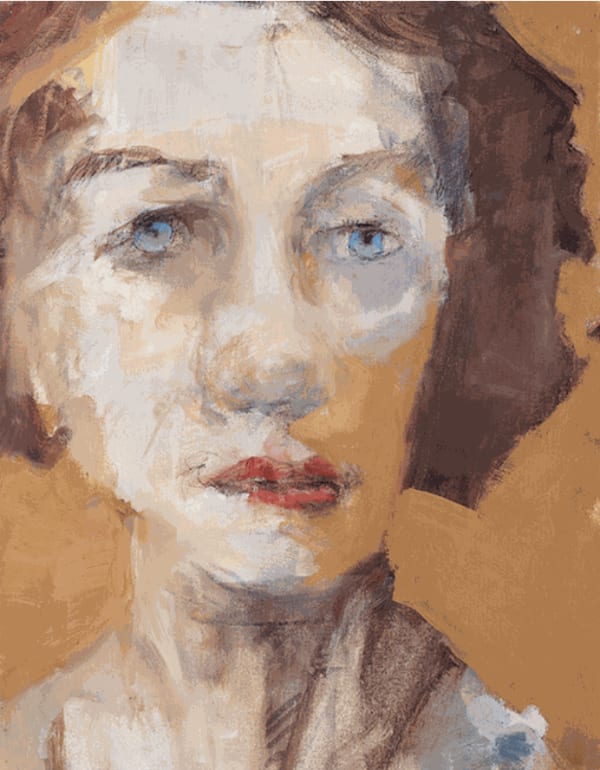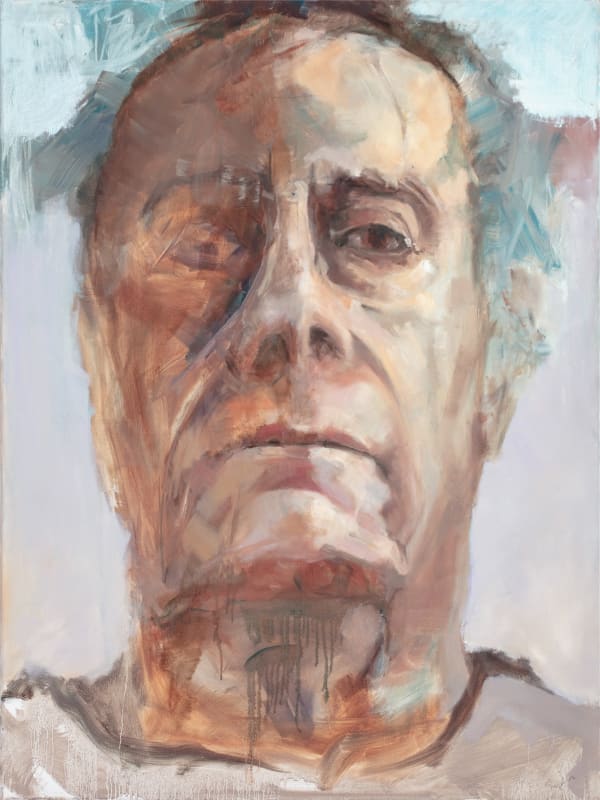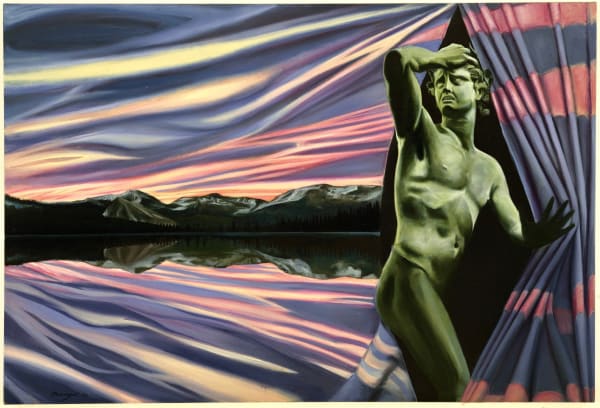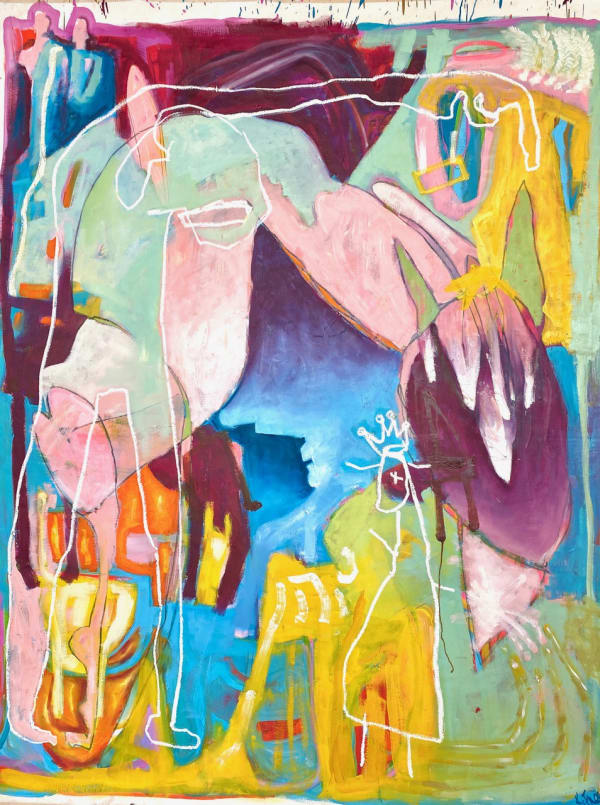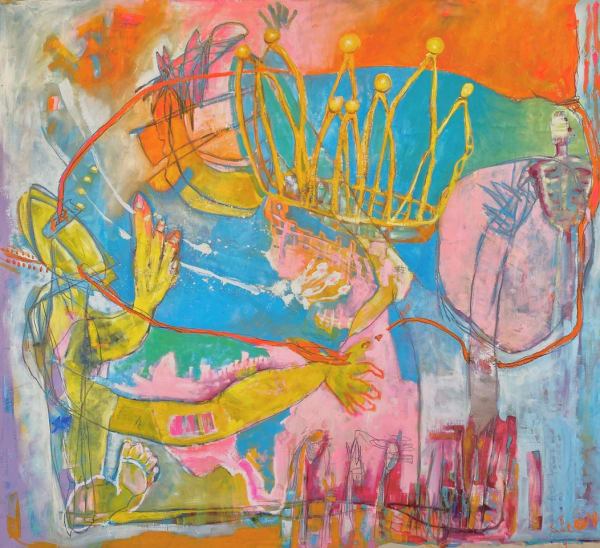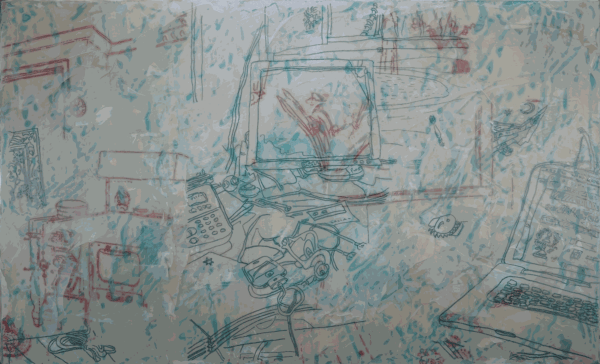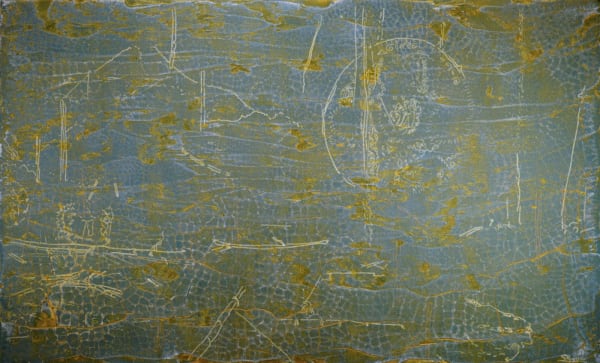-
-
Guest Curated and Essay by Mary Hrbacek
-
The exhibition "Light Fields" presents six inventive artists whose compelling expertise culminates in engrossing works of painting, drawing and photography, in unique forms of evocative personal expression. The artists participating in the show are London Amara, Jim Singelis, Deborah Masters, Robert Mango, Kaye Freeman and Rebecca Calderón Pittman. Their works resonate with one another to expand the intensity and spirit of the artists' individual voices. Today, advances in science support the widely accepted principle that as individuals we are deeply connected by a united field of energy that flows through us and determines our connections on this Earth. We share, via our empathetic range of responses, global and local events, experiences and visual images, thoughts, emotions and information. In everyday life we are subject to news forecasts about natural disasters, war torn regions, violence, accidents, scenes of draught and starvation, but also news about sports champions' triumphs, amazing good deeds, and medical breakthroughs. We acknowledge this information and proceed with our lives the best way we can. The waves of our thought patterns are transmitted to others, not only by means of technology, but also in the cosmic consciousness via an immeasurable passage of data and human vibrations. We perceive in our daily lives that we are not isolated or alone; we are participants in the larger scheme of the human condition. We can know and feel the hardships and distress of others and feel uplifted by their courage. When activists protest for the sake of justice, we are all inspired. We exist in a wholeness of the human community, which allows our lives to touch those beyond our finite three-dimensional perceptions, in a unified field of reality. The works on view interact by communicating their meaning both overtly and subliminally to empower each other. Their contrasts and affinities highlight and clarify the significance of this diverse series of figurative, semi-abstract and abstract subjects. Here photographic and painting portraits, landscapes, the signature images within crosses, apocalyptic futuristic symbolic visons, delicate architectural inner spaces and abstracted narratives of power and authority confront us in works of singular insight.
The artists transmit experiences and relationships that flow through the center of each other’s core issues, to forge connections within their related themes at the peak of their working output. They are dedicated to exploring their inner anxieties and unresolved personal issues; their narrative works convey the threads that weave the universal impact of human concerns into their individual visions. A discernable accord of expression and intension, achieved through imagery, color, lines, shapes and their attendant felt symbolic array of meaning and portent, is generated by the works.
-
-
London Amara
London Amara's explorations with large-scale collodion "wet plate" photography, using a syrupy solution formulated with nitrocellulose and a blend of ether and alcohol, augment her silver gelatin and pigment prints. Her subtle visions of intimate backwoods streams and massed broken branches reveal a singular connection with the haunting portraits she so sensitively realizes in the subjects who populate her pictures. Amara views images of devotion and attachment as seen in "Mother and Son," and her probing, distressed portrait entitled "Ishtar," with a gentle acceptance which allows the inner meaning of each subject its own special imprint. In "Ishtar" Amara accents the disintegration of one side of the subject's face in order to tell the tale of deep despair and sadness we experience as a universal response to great loss, extreme pain or psychological torment. Amara's art spans the human condition with honesty and compassion, without censure. She sees nature in sepia tones of pale harmonies and barely established contrasts, in order to softly discern the subjects with ultra-intimate portrayals. Nature has never appeared to the naked eye so delicate or so vulnerable, not even at dawn or in the twilight of the day. It is as if the photographer is one with her subject in deeply experienced radiant atmospheric exposure. Amara had a wild unconventional upbringing in the Ohio backwoods, which she seems to have reinvented in her art.
-
Click to Enlarge
-

London Amara, After the Storm, 2018
Ambrotype original, archival pigment print, 40 x 50 inches
-

London Amara, Alternate Vision, 2018
Ambrotype original, archival pigment print, 40x 50 inches
-

London Amara, The Faces of Many, 2018
Ambrotype original, archival pigment print, 50 x 40 inches
-

London Amara, Father, 2018
Ambrotype original, archival pigment print, 50 x 40 inches
-

London Amara, Human Touch, 2018
Ambrotype original, archival pigment print, 50 x 40 inches
-

London Amara, Ishtar, 2018
Ambrotype original, archival pigment print, 40 x 40 inches
-

London Amara, Last Light, 2018
Ambrotype original, archival pigment print, 50 x 40 inches
-

London Amara, Mother and Son, 2019
Ambrotype original, archival pigment print, 40 x 50 inches
-
-
-
Jim Singelis
Jim Singelis's inventive accidental self-portraits create a clear contrast to the softly felt faces encountered in London Amara's art. His painted shades of feeling and meaning are uncompromising narratives of fictional individuals he has come to devise through the cumulative process registering his own varying emotions as they manifest on his face during the painting day. The face may be referred to as a mask that hides one's true psychic self behind a semblance of superficial camouflaged feelings; Singelis approaches his painting in a spontaneous survey of self-understanding, insisting that his brush strokes be believable and authentic. The portrait images that arise develop into characters whose personalities are infused with facial expressions that evoke universal experiences viewers may recognize and connect with. These experimental process-based images chronicle the artist/s reactions as he realizes emotional struggles within inner trials. Singelis does not intend to illustrate actual facial features or outward appearances; he accesses his own ongoing stream of conscious attitudes as he works to create what he comes to accept as resolved completed works. The artist paints every day, whether he actually feels inclined, in a commitment that he describes as akin to the rigors of steady employment. He intends to honor the brush marks that generate a history of his work day, which he forges through his overlapping cumulative technique. in portrayals. The viewer is invited, through imagination or empathy, into the confines of the artist's inner world of instincts, intuitions and emotions. These unexpected invented portraits are unique as chronicles of emotional fortitude, in works engendered from the artist's own mirrored observed reflections. They are testaments to the insights experienced by the painter as a fragile mortal who exists in a condition of vulnerability, subject to the traumas and dilemmas that time accrues in our everyday lives. They form a chapter in a portfolio that in its making has perhaps alleviated some of the unease seen closeup in intimate stories of visual expressions.
-
Click to Enlarge
-

Jim Singelis, Blue Eyes, 2018
Oil, graphite on canvas, 18 x 14 inches
-

Jim Singleis, Dog Profile, 2016
Oil, charcoal, graphite, oil stick on panel, 36 x 24 inches
-

Jim Singelis, Earth Tones 2, 2013
Graphite, oil on paper, 11 x 8.5 inches
-

Jim Singelis, Frown, 2015
Oil, charcoal on paper, 20 x 16 inches
-
-
-
Deborah Masters
Deborah Masters's art communicates with as much empathy as Singelis realizes in his portraits, but, motivated by her acute social conscience and concern for the environment, she takes a more universal view of her subjects. Masters empathizes so deeply with the plight of the victims that in her art she places them in the context of the Christian cross, which links these people to Christ's suffering and redemption. Her poignant close-ups of the Madonna cradling the perished Christ, of Afghan families, of a Cross with Afghanis displaying war time loss, and a black Madonna Cross, among others, display Masters's compassionate identification with the plights of global citizens and those overcome by the destiny of war. She employs the cross as a basis to explore her concern for global natural disasters such as earthquakes and tsunamis, in which small, presumably doomed figures are immersed in overriding tidal waves on a monstrous scale. Masters experiences their pain almost with a sense of tenderness that drives her to try to make a difference by depicting a way to make meaning out of the mass suffering that permeates their predicaments. She becomes even more intimate in her Ghost drawings, which picture those who have passed over, as well as those who seem soon destined for the afterlife. Humankind is endowed with empathy, to yield universal experiences on multiple planes of existence. Masters creates her clear imagery that highlights and salutes those who are ignored or hidden in the aftermaths of disasters. She intends to recognize their unimaginable losses and hopelessness by conveying the caring vibes of solace which generate feelings of strength and fortitude to help challenged people endure.
-
-

Deborah Masters, Afghan Family Cross, 2006
Painting on poplar, 24 x 24 inches
-

Deborah Masters, Black Madonna Cross, 2006
Painting on poplar with bronze, 19.5 x 29 inches
-

Deborah Masters, Cross with Afghanis, 2007
Painting on poplar, 16 x 19 inches
-

Deborah Masters, Cross of Pakistan Earthquake, 2005
Painting on poplar, 17.5 x 22 inches
-

Deborah Masters, Cross of Saints and Lambs, 1997
Painting on poplar, 14.5 x 11.5 inches
-

Deborah Masters, Ghosts 1, 2005
Oil, pencil on vellum, rag paper, 51 x 35 inches
-

Deborah Masters, Ghosts 2, 2005
Oil, pencil on vellum, rag paper, 51 x 35 inches
-

Deborah Masters, Ghosts, 3 guys, 2017
Oil, pencil on rag paper, 30 x 42 inches
-

Deborah Masters, Waiting to be Ghosts, 2009
Oil, pencil on vellum and rag paper, 42.5 x 54.5 inches
-

Deborah Masters, Waiting To Be Ghosts 2, 2009
Charcoal on vellum & rag paper, 53 x 41 inches
-

Deborah Masters, Mexican Madonna Cross, 2005
Oak and paint, 17.5 x 20.25 inches
-

Deborah Masters, National Geographic Girl Cross, 2005
Oak and acrylic, 19.25 x 15.25 inches
-
-
-
Robert Mango
Robert Mango's complex allegorical "Rhapsody" paintings (1982 - 2003) symbolize the desire to explore his evolving identity in his transformational self-image as a super hero, a champion and a rescuer whose actions are imbued with the creative spirt of the artist. These incarnations are culled from a range of cultures and include two Hindu gods, Krishna and Shiva, and a Venetian carnival clown. New York as a metropolis filled with cultural icons, museums, symbolic references and nature, contributes the specific iconography which Mango realizes with care to create realistic believable settings. He employs tumultuous natural disasters as a theme in the works that focus on monumental catastrophes such as a disruptive flood which submerge the metropolis in its depths. His depiction of an Egyptian pharaoh in the work "Burial at Sea" is a commentary on his concern that New York will eventually transform into a ruin as devastated as the Ancient Egyptian cities and culture. In several works, Mango's mythological interventions can perhaps be depended on to rescue the survivors stranded by the apocalyptic natural forces. His images seem in a sense to be symbolic of a new age that will trump and circumvent the many insoluble human and natural problems. Mango is forging worlds that will hopefully emerge from the portentous destruction to provide a fresh new platform for life in order to reinvigorate itself. His inventive challenges within the context of "Lost Worlds" reveal hopeful underpinnings of optimism in an imaginary vision where new possibilities may arise. Mango handles his materials with skill and focus; he taps into the communal unconscious through apocalyptic visions with authority and believability. Mango experiences a link with the collective unconscious in his nightly runs in Manhattan as visions of realized paintings surged in his mind.
-
Click to Enlarge
-

Robert Mango, Beckoning Defiance, 1994
Oil on canvas, 46 x 84 inches
-

Robert Mango, Brothers, 1994
Oil and modeling paste on canvas over sculpted wood, 48 x 90 inches
-

Robert Mango, Burial at Sea, 2004
Oil on canvas, 60 x 72 inches
-

Robert Mango, Game Board Owls, 1994
Oil on canvas, 64 x 96 inches
-

Robert Mango, Journey to Redfish Lake, 1994
Oil on canvas, 46 x 56 inches
-

Robert Mango, Millennium, 1989
Oil on canvas, 84 x 120 inches
-

Robert Mango, Orpheus Leaving Utah, 1996
Oil on canvas, 50 x 74 inches
-

Robert Mango, Pete’s Indictment, 1983
Pen and Ink, watercolor and gouache on rag paper over frame, 60 x 32 inches
-
-
-
Kaye Freeman
On first glimpse, Kaye Freeman's spirited semi-abstract compositions dance and sway to a lively tempo in visually musical compositions. Yellow is associated with the sun and symbolizes fire, heat and life while pink hues suggest subliminally the presence of human subjects in the context of her non-figurative compositions. Color is a central vehicle with which veils of paint overlap and undulate with charged energy. Gradually, deeper levels of experience unfold. It takes some time to realize that tensions reverberate among the players in Freeman's complex narratives. As her tales progress, she tamps down her color choices into more somber hues that indicate emotional conflict in challenging life events that she explores in dynamic compositions.
It seems that her "Emperor" figure of "The Emperor's New Clothes" renown, very likely symbolizes the untrustworthy authority figures that dominate politics, society, and culture, defining history's challenges in the context of cyclical rivalries in calamitous recurring movements. As one of her preferred platforms, Freeman explores variations on this theme in depth, from various viewpoints, with intense dramas that reverberate through the formats via the calligraphic paint handling. The overlapping forms create activated space in a non-linear setting that keeps the eye moving to rhythms that can almost be heard. Freeman's uncompromising emotionally charged concerns permeate her works to lend a sense of tension, free of boundaries, to the intersections of her large and smaller shapes, lines and recognizable forms. Freeman's semi-abstract "Emperor" theme reflects chronicles that express moments of upbeat emotions as well as turmoil regarding society's economic woes, social fissures, and aesthetic interrelationships related through fragmented human body parts, royal crowns and linear cities. She apparently feels safest to disclose her distrust of the authority figure in a charged visual discourse, designed perhaps to resolve emotionally fraught personal issues in her progressing exploration of self-discovery. She seems to be gaining strength through her ability to orchestrate the players in her story, to rotate and to replace the actors. Freeman has conceived and created a personalized symbolic take on the abstract and semi-abstract vernacular.
-
Click to Enlarge
-

Kaye Freeman, Cats Cradle, 2017
Oil paint, oil stick and graphite on canvas, 40 x 47 inches
-

Kaye Freeman, The Emperor’s Canary, 2018
Oil paint and oil stick on canvas, 78 x 62 inches
-

Kaye Freeman, The Emperor's Nemesis, 2018
Oilstick, oil paint and graphite on canvas, 132 x 72 inches
-

Kaye Freeman, The Emperor’s Ransom, 2018
Oil paint, oil stick, graphite and glitter on canvas, 92 x 78 inches
-

Kaye Freeman, The Other Pico, 2019
Oil paint and oil stick on canvas, 72 x 120 inches
-

Kaye Freeman, The Emperor's Twit, 2017
Oil paint and graphite on canvas, 78 x 101 inches
-

Kaye Freeman, The Emperor's Tusk, 2017
Oil paint and graphite on canvas, 78 x 87 inches
-

Kaye Freeman, Panel Two The Golden Line: dtla as the Garden of Earthly Delights, 2017
Oil paint, enamel paint, oil stick and graphite on canvas, 123 x 95 inches
-

Kaye Freeman, Panel One Santee Alley: dtla as the Garden of Earthly Delights, 2017
Oil paint, Enamel Paint, oil stick and graphite on canvas, 121 x 95 inches
-

Kaye Freeman, The First Garden Tryptich Panel One, Conception Pass, 2016
Oil paint, enamel paint, oil stick and graphite on canvas, 123 x 95 inches
-
-
-
Rebeca Calderón Pittman
Rebeca Calderón Pittman manifests her art in an experimental open approach that offers delicate, fragile, linked broken lines that infiltrate her surfaces to delineate transparent volumes of misty looking space. They stand to engage the viewer in conjectures about the intriguing essence of the amorphous realms of the format. Her textural digital and acrylic paintings on board are engendered from Pittman's Recombinant Drawing Series of 2011 - 2012, that derives from direct observation of reality rendered in layers, from unspecified locations with indistinct boundaries. She creates hybrid amalgams that merge several drawing formats, resulting in an indeterminant expanse that provides her with a sense of liberation and breathing space. Pittman mingles and conflates diverse objects and locations in Guatemala, where she grew up, and the United States, using an additive process that includes coatings of paint and distressed texture. Rooms with furniture, avenues of trees, gardens and outdoor spaces are seen without the appearance of definite perimeters to attribute ownership or identification. She employs her highly experimental, risk-taking process to subdivide her compositions on multiple sheets of vellum, adding and subtracting scanned mixed elements to create a fresh image. She does not intend what will happen from moment to moment; chance plays a major role as she develops images unconsciously, through imagination. After viewing and recombining lines on the computer, she may then print and subsequently engrave or draw them on sequential layered surfaces that have been immersed in various tones and shades of color. The artist's paintings from 2016 feature veils of hues activated in part by broken textural surfaces that vibrate with energy through digital printing within the undefined volumes of overlapping open space. In her paintings the artist plays with unplanned processes with a combination of intuitive, unexpected incidences. She wants her works to breathe freely, to allow the viewer the space to contemplate subtle worlds in a visual topography that they may relate to, free of excessive overt interpretation. These images are spheres of the mind and the imagination, clear of encumbrances or explanation. They are open and bright; they exist independent of the machinations of human weight of ownership. Viewing these works transports the viewer to another terrain that creates spaces with a delicate dreamlike aura that suggest memories or the quick thoughts that sometimes surprisingly lodge in one's mind. Their frail imaginary character links them to forgotten impressions that arise on certain cues, to become as real as they once were when experienced, like a breath of air. Pittman's works encapsulate lingering pictorial thoughts and fleeting feelings that appear visually in splintered patterns to replicate the relativity of time and its simultaneous accumulation of experienced reality.
-
Click to Enlarge
-

Rebeca Calderón Pittman
Being Without Barriers, 2011-2012
Unique print, 9 x 12 inches
-

Rebeca Calderón Pittman
Conflation, 2016
Acrylic and ink on board, 40 x 24 inches
-

Rebeca Calderón Pittman
Eternity in an Hour, 2010
Unique Print, 9 x 12 inches
-

Rebeca Calderón Pittman
Golden Butte, 2016
Acrylic and ink on board, 24 x 40 inches
-

Rebeca Calderón Pittman
The Great Majestic, 2016
Acrylic and ink on board, 24 x 40 inches
-

Rebeca Calderón Pittman
Lacoste, 2016
Acrylic, watercolor and ink on canvas, 54 x 32 inches
-

Rebeca Calderón Pittman
New Beginnings, 2011-2012
Unique print, 9 x 12 inches
-

Rebeca Calderón Pittman
Suspension and Precipitation, 2016
Acrylic, watercolor and ink on canvas, 24 x 40 inches
-

Rebeca Calderón Pittman
Tapestry, 2016
Acrylic and ink on board, 24 x 40 inches
-

Rebeca Calderón Pittman
To the Departed, 2016
Acrylic and ink on board, 24 x 40 inches
-

Rebeca Calderón Pittman
Ultra, 2016
Acrylic and ink on board, 24 x 40 inches
-

Rebeca Calderón Pittman
Windows on the Infinite, 2011-2012
Unique print, 9 x 12 inches
-
Mary Hrbacek's Light Fields: Six Voices Connected By the Unified Field
Past viewing_room










